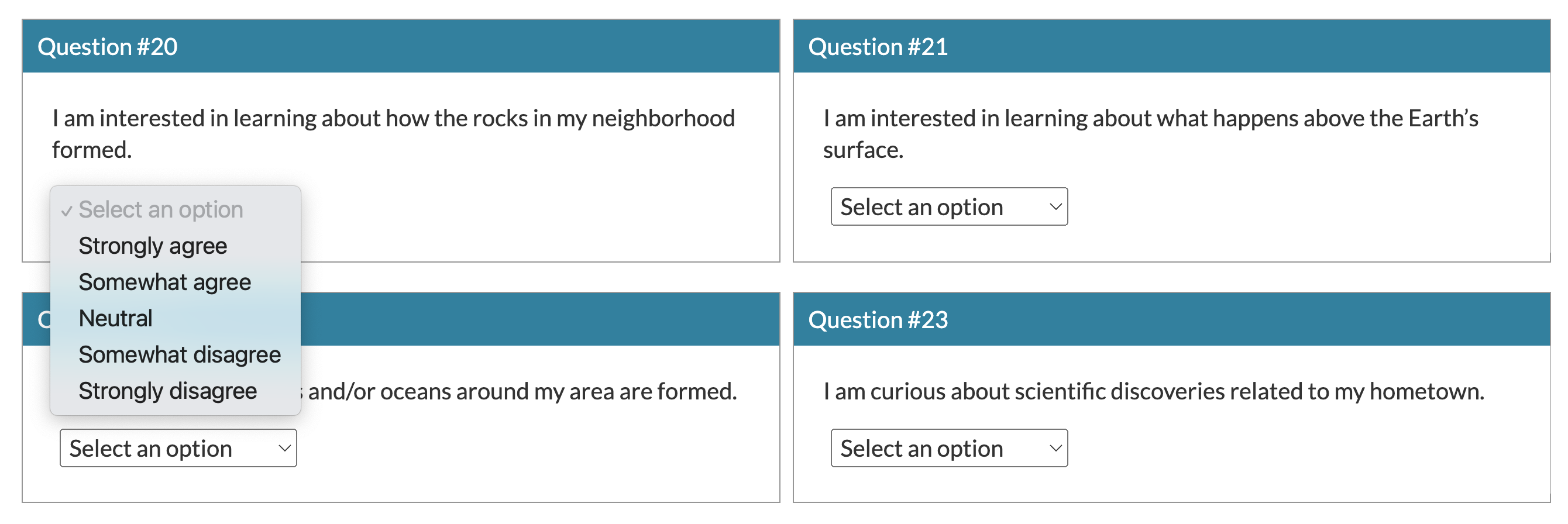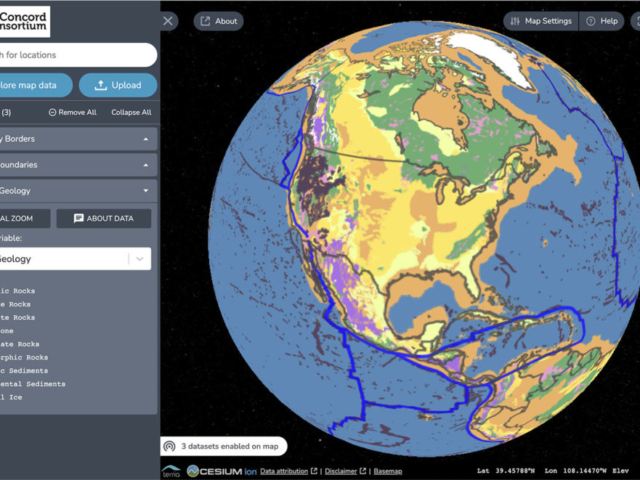Ambitious Science Teaching now includes a focus on equity and reaching diverse student populations. One principle of the Critical and Cultural Approaches to Ambitious Science Teaching (C2-AST) framework (Thompson et al., 2021) is to situate learning around phenomena that prioritizes students’ communities and cultures, their local environment, and daily experience. While this can be a powerful way to engage students and boost citizen science efforts, not every neighborhood is ideal for studying every science topic. When phenomena are largely invisible, happen on an unobservable scale, or are likely difficult to relate to on a personal level, educators must look to other teaching strategies to help build students’ curiosity and engagement. For example, it can be difficult—or even impossible—to observe rock formation in many communities. The TecRocks project is facing this challenge head on!
We believe that it is possible to increase students’ curiosity about rocks and rock formation through interactions with two new tools—the TecRocks Explorer and the Earth Rocks Geologic Map. (Both of these tools are embedded in the now publicly available Rocks & Tectonics module.) To test this, we needed to find out what students actually thought about these topics.
TecRocks Explorer (left); Earth Rocks Map 3D model (right)
Over the last school year, we developed a survey to measure students’ epistemic curiosity (EC)—or their thirst for knowledge that can motivate them to learn new concepts, expand their knowledge in areas with which they are already familiar, and solve complex problems. This survey includes 24 scale-based items that explore students’ general curiosity about both objects and events that are near the students and those that are far away, as well as specific items that explore students’ specific curiosity about rocks, rock formation, land formation, and Earth processes near and far away from students. The statements were modified from previously developed scales to measure epistemic curiosity (Kashdan et al., 2010; Litman, 2008; Mussel, 2010). Students rated the statements on a scale ranging from strongly disagree (1) to strongly agree (5).

Questions from epistemic curiosity survey
Surprising results
During the 2022-23 school year, we administered the survey to 780 students both before and after they used the Rocks & Tectonics module. We ran several analyses, which resulted in two interesting findings:
- Students’ EC around rocks and rock formation was significantly lower than their general EC. This was a somewhat disheartening, though not entirely surprising, result for a project team bent on teaching rock formation to students. Also surprising was that students were more curious about the world farther from their home than closer by.
- Students who used our Rocks & Tectonics module significantly improved their EC towards rocks and rock formation from pre- to post-survey. To see such a strong effect here was also surprising but much more welcomed news.
We then looked to teacher feedback to corroborate these findings. When asked about their students’ curiosity about rocks during the Rocks & Tectonics unit in comparison to their prior teaching methods, half of the 14 teachers in our spring field test said that their students were more curious. One teacher elaborated, “Student curiosity seemed higher this year. I tried to incorporate more interactive activities during my introductory lessons to get the students excited about rocks, which can be a challenge. They enjoyed manipulating the models in the TecRocks module.” Another teacher reported, “The students led a discussion on rock formation during a parent-teacher conference. Some of the students were excited to show their parents about rock formation and its temperature. Surprisingly, one family is visiting Hawaii this summer and plans to collect rocks to determine their nature. Collectively, my students found this activity useful in comparison to previous rock lessons. They were able to manipulate and navigate through each lesson in the module, which they found truly engaging.”
What’s next?
Teaching science is a craft. All topics cannot be taught in the same way. While some content areas are suitable for place-based learning, others benefit from different pedagogical approaches. Models and simulations reveal processes and mechanisms that are otherwise inaccessible or invisible to students—from the molecular level to the level of plate tectonics. In the TecRocks project, we are learning that these models can serve double duty, teaching scientific content and piquing students’ curiosity about topics that are outside their everyday experience.
We are continuing to examine students’ responses to the EC questions as well as teacher surveys to investigate how students’ experience with the Rocks & Tectonics module might be responsible for changes in students’ EC from the pre- to the post-test. We will also look to see if pre-survey EC results predict students’ performance on tasks in the module or pre- to post-test gains.
References
Kashdan, T. B., Gallagher, M. W., Silvia, P. J., Winterstein, B. P., Breen, W. E., Terhar, D., & Steger, M. F. (2009). The curiosity and exploration inventory-II: Development, factor structure, and psychometrics. Journal of Research in Personality, 43(6), 987–998.
Litman, J. A. (2008). Interest and deprivation factors of epistemic curiosity. Personality and Individual Differences, 44(7), 1585–1595.
Mussel, P. (2010). Epistemic curiosity and related constructs: Lacking evidence of discriminant validity. Personality and Individual Differences, 49(5), 506–510.
Thompson, J., Mawyer, K., Johnson, H., Scipio, D., & Luehmann, A. (2021). C²AST (Critical and Cultural Approaches to Ambitious Science Teaching). The Science Teacher, 89(1), 58–65.

